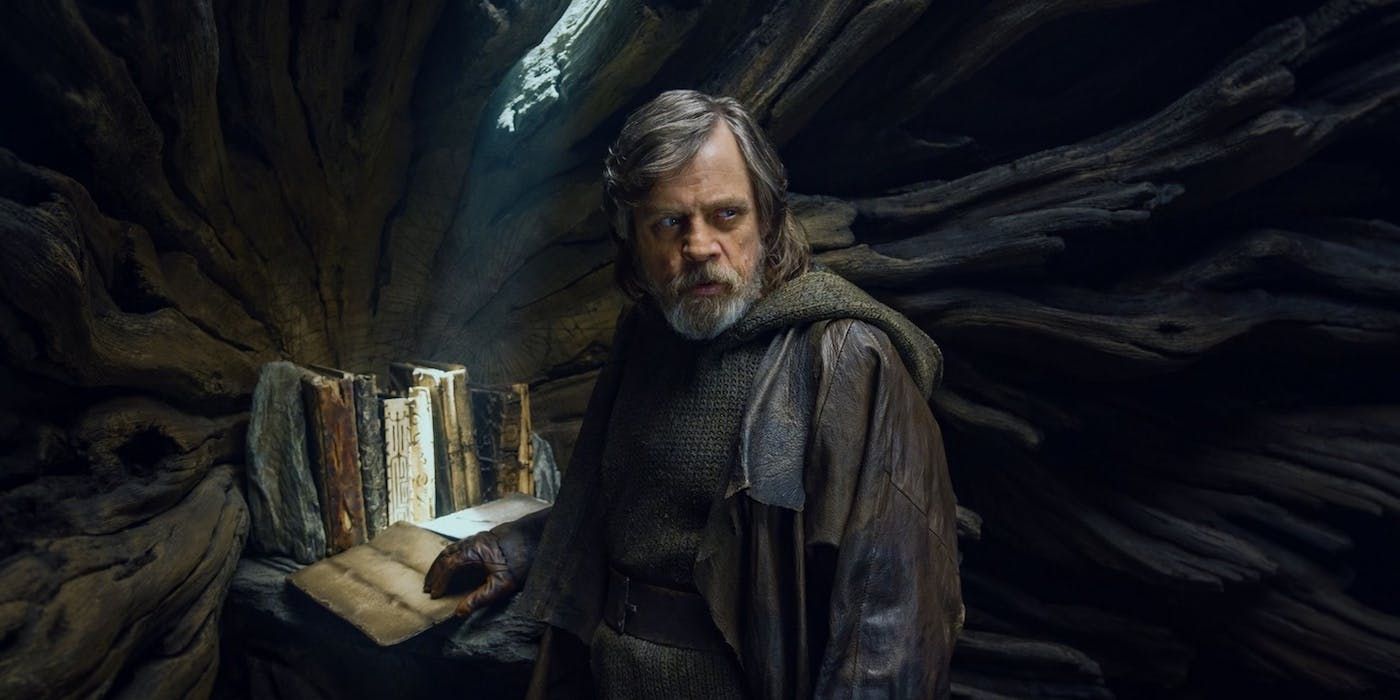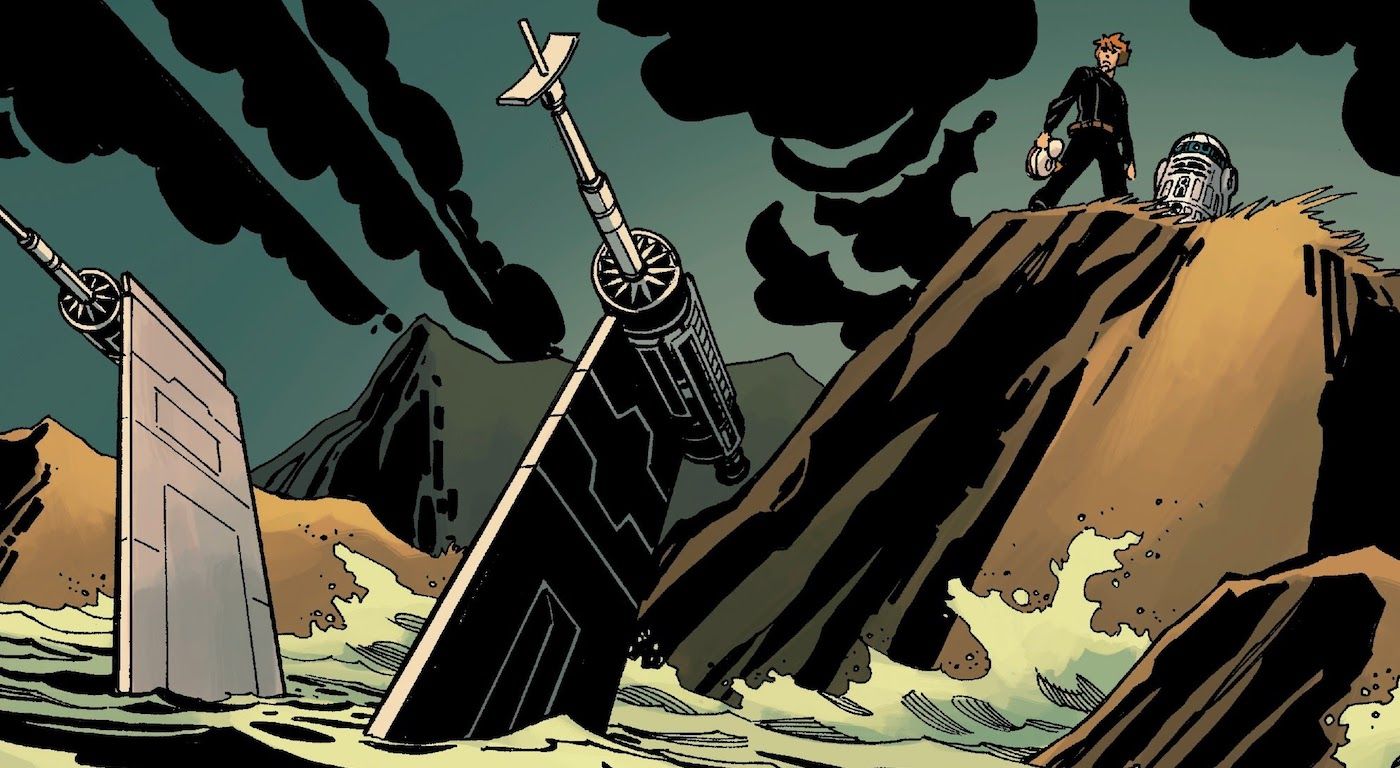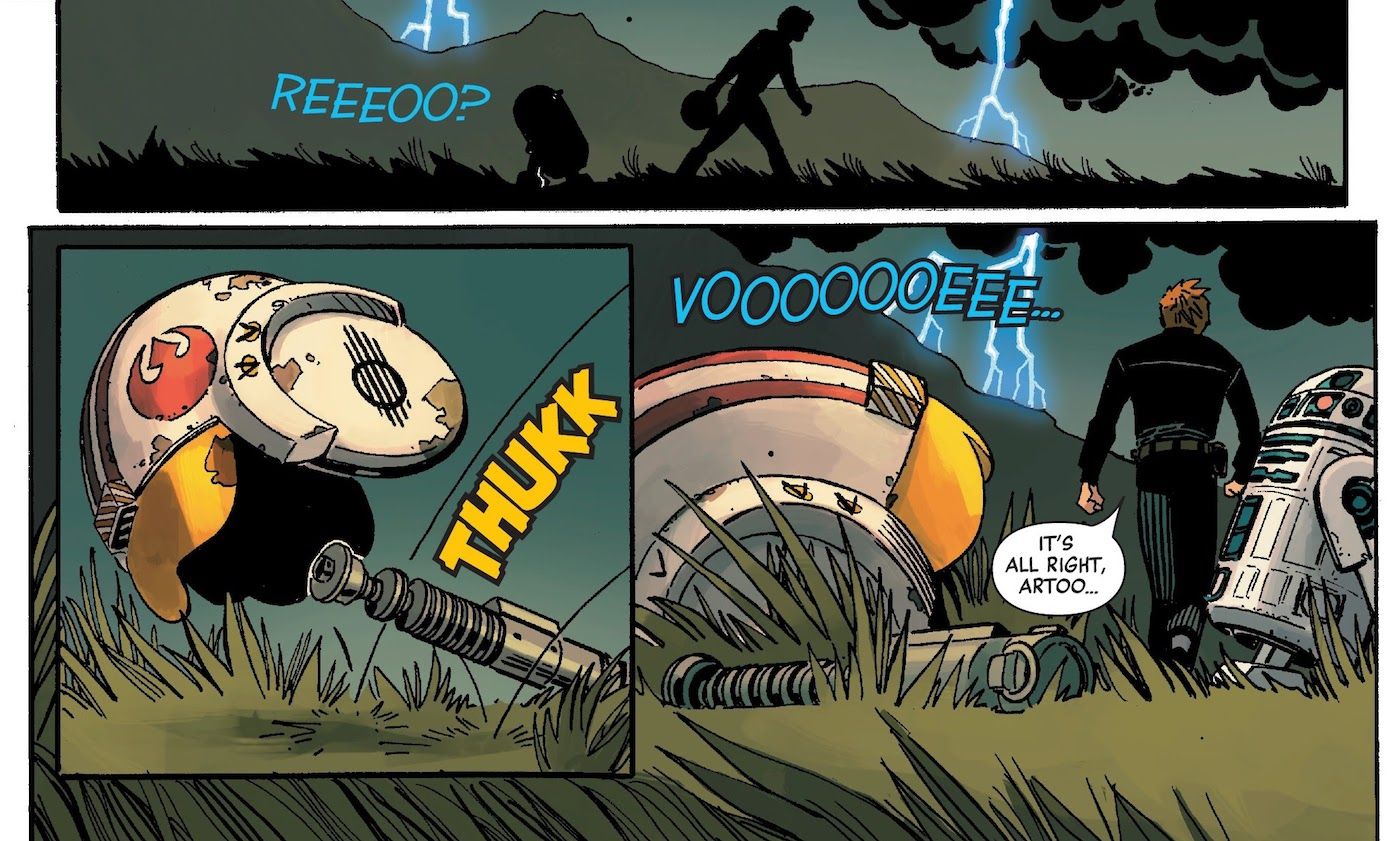SPOILER WARNING: The following article contains major spoilers for Star Wars: Age of Rebellion – Luke Skywalker #1, by Greg Pak, Chris Prouse, Scott Koblish, Stefano Landini, Karl Story, Marc Deering, Tamra Bonvillain and VC’s Travis Lanham, on sale now.
Star Wars: The Last Jedi is one of the franchise's most divisive films, with much of the fan backlash centered on the depiction of a reclusive Luke Skywalker who had turned his back on the Jedi teachings, and cut himself off from the Force.
Many viewed that as a hasty about-face for a character who had devoted himself to saving the galaxy. While writer/director Rian Johnson revealed that Luke turned against the order after he attempted to kill Ben Solo, fans felt the seeds of discord came out of nowhere and that what the film attempted to convey was lost in a plot hole. However, Marvel's Star Wars: Age of Rebellion -- Luke Skywalker #1 sheds some light on the backstory.
The dispute over Luke's path, which ended with him dying after facing his former pupil, Kylo Ren, will go on until the end of time, as loyalists refuse to believe the Jedi knight would ever turn his back on the galaxy, to say nothing of his friends. Even if he did attempt to kill Ben, it was only because he sensed a darkness swelling within the boy. Therefore, Luke's abandonment of hope, the Jedi and everyone he loves required an explanation.
The comic book one-shot does just that, illuminating the thoughts buried in the recesses of Luke's mind just before the events of Return of the Jedi. We see Luke, with his black garb and green lightsaber, helping the Rebels to secure fuel at an Imperial refinery in the Outer Rim. But when they attempt to escape, Emperor Palpatine tries to mentally latch onto Luke to probe for a similar darkness. In other words, he's attempting to poison Luke's mental state. But rather than seeing a corrupt Luke, readers get some insight into secrets that remarkably inform his actions in The Last Jedi.
After Luke imagines the Rebels dying in a dogfight, he heads to a mysterious planet, disenchanted with the war consuming the galaxy. He wants away from it all, and we see him sinking his X-wing in the ocean, similar to what he did in Johnson's film. It's quite symbolic, because when Yoda saw him as the new hope, the Jedi Master raised Luke's ship from the swamp on Dagobah. Clearly, here, Luke is drowning the concept of being the poster boy for the Jedi. That's why, in The Last Jedi, when audiences saw the X-wing in its aquatic grave, they realized the Luke of old was actually gone.
That notion is compounded in this comic when Luke drops his Rebel helmet and his lightsaber. We didn't see his helmet in The Last Jedi, but he did toss his lightsaber aside when it was presented to him by Rey. Clearly, the war was weighing heavily on Luke's mind in his younger days, and there was always a part of him that wanted to discard the lightsaber and that life. Being a Rebel and a Jedi left Luke wanting more.
That's something he ruminated about to Rey when he trained her, and now this comic establishes that discontent wasn't something that randomly appeared in The Last Jedi. They were stirring within Luke for decades, as he carried the burden of being a galactic savior when he himself was lost and confused.



